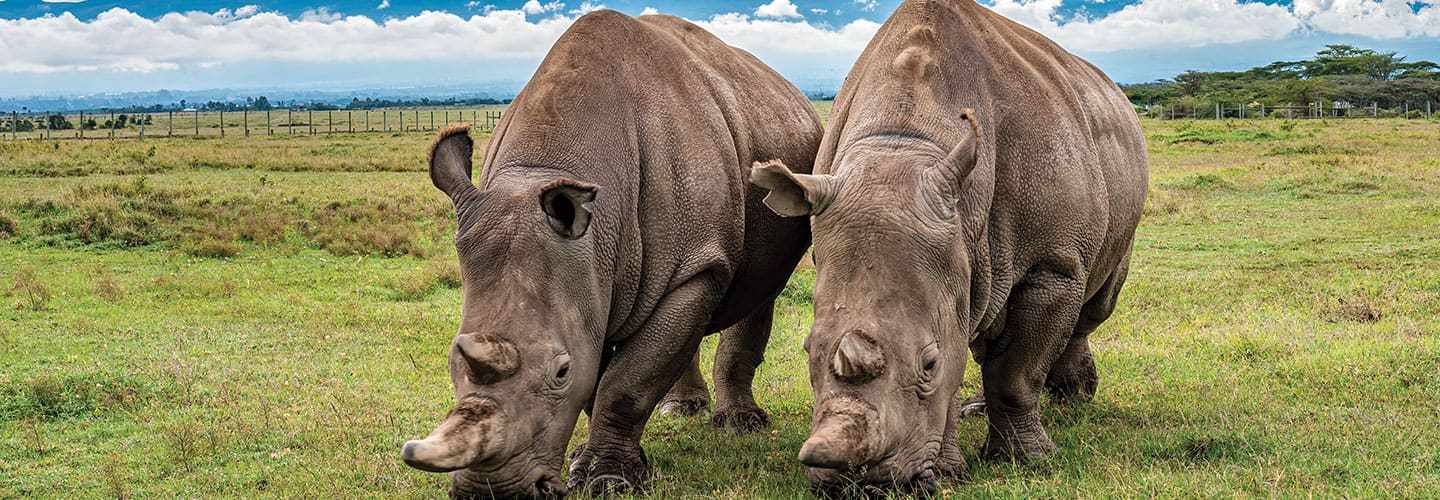Rangers guard Fatu and Najin 24 hours a day.
Rangers guard Fatu and Najin 24 hours a day.
Fatu and Najin may be the most closely watched animals on Earth. The two female rhinos—mother and daughter—live in the African nation of Kenya. Armed rangers and trained dogs guard them 24 hours a day. An electric fence protects their home. Planes fly overhead, searching for intruders.
Meanwhile, Fatu and Najin live their lives. They fill their giant bodies with fresh grass. They cool off in the mud. They scratch their 2-inch-thick skin on old fence posts.
Within the next 20 years, they will grow old and die. And when they do, the world will lose more than just two animals. It will lose an entire species—because Fatu and Najin are the last northern white rhinos left on Earth.
Fatu and Najin are mother and daughter. They are rhinos. They live in the African nation of Kenya. They may be the most closely watched animals on Earth. Armed rangers and trained dogs guard them at all times. An electric fence protects their home. Planes fly overhead to spot intruders.
Meanwhile, Fatu and Najin live their lives. They eat grass. They cool off in the mud. They scratch their thick skin on fence posts.
And they grow older. Within the next 20 years, they will die. When they do, the world will lose a whole species. Why? Because Fatu and Najin are the last northern white rhinos left on Earth.
Fatu and Najin—two female rhinos—may be the most closely watched animals on Earth. They are mother and daughter, and they live in the African nation of Kenya. An electric fence surrounds their home. Armed rangers and trained dogs guard them 24 hours a day, and planes fly overhead in search of intruders.
Meanwhile, Fatu and Najin live as rhinos are supposed to. They fill their giant bodies with fresh grass. They cool off in the mud. And they scratch their 2-inch-thick skin on old fence posts.
Within the next 20 years, they will grow old and die. And when they do, the world will lose more than just two animals—it will lose an entire species. Fatu and Najin are the last northern white rhinos left on Earth.

